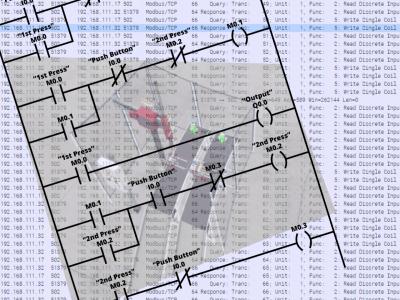Machine Learning

The data set collected using a self-designed electronic nose (e-nose) involved eight Chinese liquor types, which are LanJinJiu with 38% alcohol concentration (LJJ38), LanJinJiu with 48% alcohol concentration (LJJ48), DaoHuaXiang with 42% alcohol concentration (DHX), LuZhouLaoJiao with 38% alcohol concentration (LZLJ), MianZhuDaQu with 38% alcohol concentration (MZDQ), QingJiu with 38% alcohol concentration (QJ), ShiLiXiang (SLX) with 40% alcohol concentration and BianFengHu with 40% alcohol concentration (BFH).
- Categories:
 536 Views
536 ViewsWe present below a sample dataset collected using our framework for synthetic data collection that is efficient in terms of time taken to collect and annotate data, and which makes use of free and open source software tools and 3D assets. Our approach provides a large number of systematic variations in synthetic image generation parameters. The approach is highly effective, resulting in a deep learning model with a top-1 accuracy of 72% on the ObjectNet data, which is a new state-of-the-art result.
- Categories:
 624 Views
624 ViewsThis dataset consisting of MODBUS/TCP communication was created using the Factory.IO simulator (trial version is available). The dataset contains different scenarios that control different industrial processes. For each scenario, files are provided to capture normal communication and communication with anomalies. The purpose of the dataset is to support research and evaluation of anomaly detection methods in the field of ICS.
- Categories:
 2744 Views
2744 ViewsThe dataset originally was taken from DAIAD, which has the mechanism to monitor the water consumption in real time using a validated platform for different cities. These datasets had the record of different water consumption values taken from the smart water meters that indicates, total water consumption by different users in Litres with the time interval of one hour for a year.
- Categories:
 5254 Views
5254 Views
The MPSC-rPPG dataset comprises photoplethysmograph (rPPG) data with the PPG ground truth, making it a perfect dataset to evaluate various algorithms for extracting PPG, measuring heart rate, heart rate variability from video. The dataset contains facial videos and Blood Volume Pulse (BVP) data captured concurrently.
- Categories:
 4511 Views
4511 Views
COVID-19 tracing data are utilized to form two dataset networks, one is based on the virus transition between the world countries, as the dataset consists of 36 countries and 75 relationships between them. Whereas the other dataset is an attributed network based on the virus transition among the contact tracing in the Kingdom of Bahrain. This type of networks that is concerned in tracking a disease or virus was not formed based on COVID-19 virus transmission.
- Categories:
 1257 Views
1257 ViewsThe Open Big Healthy Brains (OpenBHB) dataset is a large (N>5000) multi-site 3D brain MRI dataset gathering 10 public datasets (IXI, ABIDE 1, ABIDE 2, CoRR, GSP, Localizer, MPI-Leipzig, NAR, NPC, RBP) of T1 images acquired across 93 different centers, spread worldwide (North America, Europe and China). Only healthy controls have been included in OpenBHB with age ranging from 6 to 88 years old, balanced between males and females.
- Categories:
 8896 Views
8896 ViewsDistributed Denial of Service (DDoS) attacks first appeared in the mid-1990s, as attacks stopping legitimate users from accessing specific services available on the Internet. A DDoS attack attempts to exhaust the resources of the victim to crash or suspend its services. Time series modeling will help system administrators for better planning of resource allocation to defend against DDoS attacks. Different Time Series analysis techniques are applied to detect the DDoS attacks.
- Categories:
 6334 Views
6334 ViewsThis dataset is a collection of images and their respective labels containing multiple Indian coins of different denominations and their variations. The dataset only contains images of one side of each coin (Tail side) which contains the denomination value.
The samples were collected with the help of a mobile phone while the coins were placed on top of a white sheet of A4-sized paper.
- Categories:
 3478 Views
3478 Views





